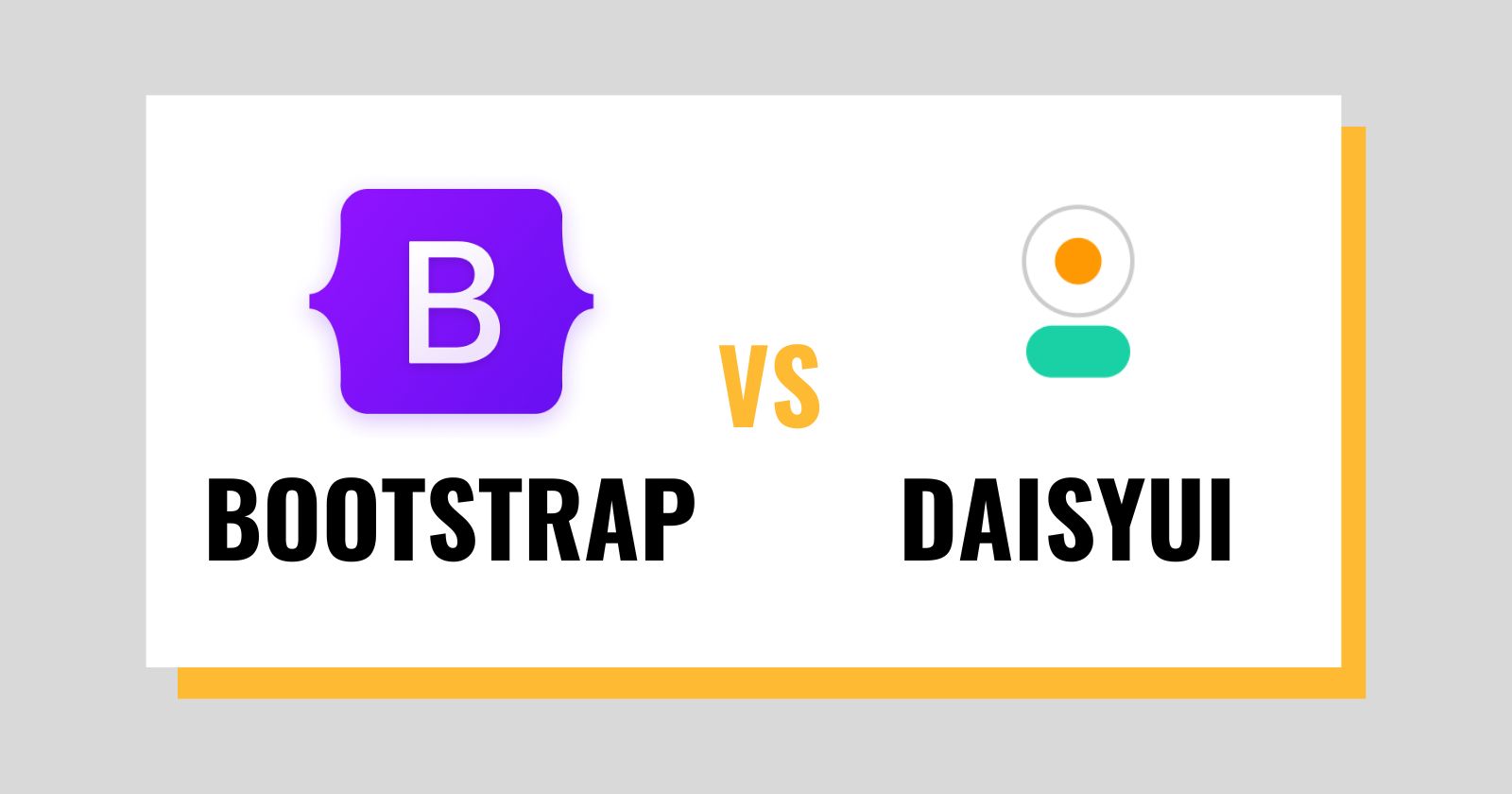Bootstrap VS DaisyUI
 Dania Emari
Dania Emari
What are Bootstrap and DaisyUI?
They are both front-end development frameworks and toolkits, but they are different from each other.
DaisyUi is a UI component library and plugin for Tailwind CSS, a popular utility-first CSS framework. And Bootstrap is an open-source front-end framework for web development that provides a collection of pre-designed HTML, CSS, and JavaScript components and tools.
Both of them help developers build responsive and visually appealing web applications quickly and efficiently by providing a set of customizable and ready-to-use UI components. but each one of them has a different approach to the matter.
What is the difference between them?
While both of them are used for front-end development, yet they are different in some cases:
Functionality:
DaisyUI :
Functionality is tightly integrated with Tailwind CSS, providing a set of customizable UI components that align with the utility-first approach. It offers ready-made UI components like buttons, forms, and navigation menus designed to work seamlessly with Tailwind CSS.Bootstrap:
Provides a comprehensive set of UI components and JavaScript plugins for building web applications quickly. It includes pre-designed components such as navigation bars, modals, carousels, and more.
Customization:
DaisyUI :
DaisyUI encourages extensive customization through Tailwind CSS classes. You can easily modify the appearance and behavior of components to match your needsBootstrap:
Bootstrap provides customization options by overriding its CSS or using custom themes, but that may require more effort.
Integration:
DaisyUI:
It is tightly integrated with Tailwind CSS and works seamlessly with it. If you're already using Tailwind CSS, adding DaisyUI is straightforward.Bootstrap:
Bootstrap is a standalone framework with its CSS and JavaScript. You can integrate it into various projects, but it doesn't rely on other frameworks like Tailwind CSS.
Performance:
DaisyUI:
Performance largely depends on how efficiently Tailwind CSS is used since DaisyUI builds on top of it. It can be lightweight when configured properly because it only adds what you use.Bootstrap:
Bootstrap's larger collection of CSS and JavaScript components can lead to a larger file size if not customized carefully. Performance can be impacted by including unnecessary components and styles.
Which one should I use for my project?
While both of them provide ready-made and pre-designed components that can help with your project productivity. Yet, the decision should be made based on your project's specific needs and your comfort level in using the framework.
Use DaisyUI if you are already using Tailwind CSS and if you prefer a minimalistic, highly customizable approach. On the other hand, use Bootstrap if you need a faster development process, want an opinionated design, and require a rich set of pre-built components and JavaScript functionality.
Conclusion:
DaisyUI and Bootstrap are valuable tools in web development, but they cater to different approaches and use cases. Your choice between them should depend on customization, performance, and the learning curve for the framework.
Subscribe to my newsletter
Read articles from Dania Emari directly inside your inbox. Subscribe to the newsletter, and don't miss out.
Written by
